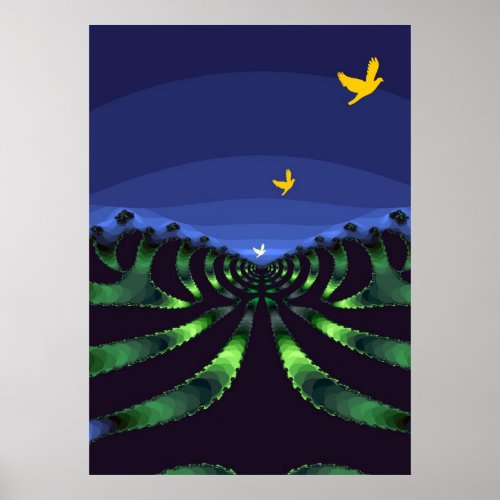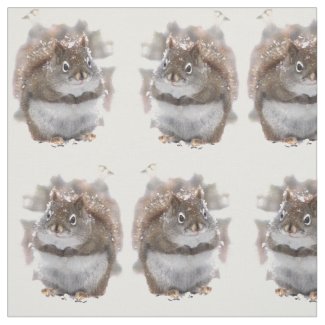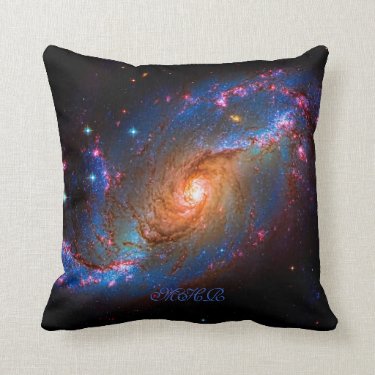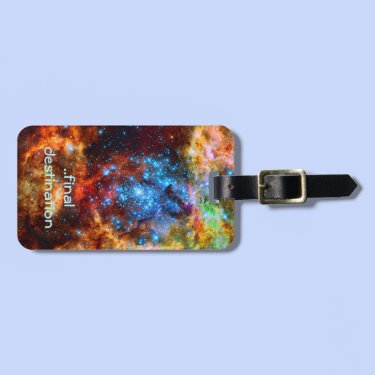|

Out of the Void Poster by Bebops
I hope to display a variety of animal images on this blog to delight us all. I have created many products featuring wildlife and pets for my Zazzle stores, Bebop's Place and Bebop's Weddings, using my original photographs and designs. I am also constantly amazed at the gorgeous animal products available from the rest of the Zazzle community. I am hoping others will enjoy this blog and even be moved to purchase some of these lovely items for gifts or just for the pleasure of having such beauty around.
Saturday, February 7, 2015
Zazzle Fabric from Bebops: Sweet Squirrels Fabric
Monogram Barred Spiral Galaxy NGC 1672 Pillow
A gorgeous something for Valentine's day to express your love and featuring a cute animal. Click to see, personalize and buy.
tagged with: monogram initials, star galaxies, deep space astronomy, barred spiral galaxy, starry space picture, galactic arms, supermassive black hole, dust lanes, star forming galaxy, hrbstslr bsgsst
Galaxies, Stars and Nebulae series This NASA Hubble Space Telescope view of the nearby barred spiral galaxy NGC 1672 unveils details in the galaxy's star-forming clouds and dark bands of interstellar dust.
One of the most striking features is the dust lanes that extend away from the nucleus and follow the inner edges of the galaxy's spiral arms. Clusters of hot young blue stars form along the spiral arms and ionize surrounding clouds of hydrogen gas that glow red. Delicate curtains of dust partially obscure and redden the light of the stars behind them by scattering blue light.
Galaxies lying behind NGC 1672 give the illusion they are embedded in the foreground galaxy, even though they are really much farther away. They also appear reddened as they shine through NGC 1672's dust. A few bright foreground stars inside our own Milky Way Galaxy appear in the image as bright and diamond-like objects.
As a prototypical barred spiral galaxy, NGC 1672 differs from normal spiral galaxies, in that the arms do not twist all the way into the center. Instead, they are attached to the two ends of a straight bar of stars enclosing the nucleus. Viewed nearly face on, NGC 1672 shows intense star formation regions especially off in the ends of its central bar.
Astronomers believe that barred spirals have a unique mechanism that channels gas from the disk inward towards the nucleus. This allows the bar portion of the galaxy to serve as an area of new star generation.
NGC 1672 is also classified as a Seyfert galaxy. Seyferts are a subset of galaxies with active nuclei. The energy output of these nuclei can sometimes outshine their host galaxies. This activity is powered by accretion onto supermassive black holes.
NGC 1672 is more than 60 million light-years away in the direction of the southern constellation Dorado. These observations of NGC 1672 were taken with Hubble's Advanced Camera for Surveys in August of 2005. The composite image was made by using filters that isolate light from the blue, green, and infrared portions of the spectrum, as well as emission from ionized hydrogen.
more items with this image
more items in the Galaxies, Stars and Nebulae series
image code: bsgsst
Image credit: NASA, ESA, and The Hubble Heritage Team (STScI/AURA)-ESA/Hubble Collaboration
»visit the HightonRidley store for more designs and products like this
The Zazzle guarantee: We promise 100% satisfaction. If you don't absolutely love it, we'll take it back!
tagged with: monogram initials, star galaxies, deep space astronomy, barred spiral galaxy, starry space picture, galactic arms, supermassive black hole, dust lanes, star forming galaxy, hrbstslr bsgsst
Galaxies, Stars and Nebulae series This NASA Hubble Space Telescope view of the nearby barred spiral galaxy NGC 1672 unveils details in the galaxy's star-forming clouds and dark bands of interstellar dust.
One of the most striking features is the dust lanes that extend away from the nucleus and follow the inner edges of the galaxy's spiral arms. Clusters of hot young blue stars form along the spiral arms and ionize surrounding clouds of hydrogen gas that glow red. Delicate curtains of dust partially obscure and redden the light of the stars behind them by scattering blue light.
Galaxies lying behind NGC 1672 give the illusion they are embedded in the foreground galaxy, even though they are really much farther away. They also appear reddened as they shine through NGC 1672's dust. A few bright foreground stars inside our own Milky Way Galaxy appear in the image as bright and diamond-like objects.
As a prototypical barred spiral galaxy, NGC 1672 differs from normal spiral galaxies, in that the arms do not twist all the way into the center. Instead, they are attached to the two ends of a straight bar of stars enclosing the nucleus. Viewed nearly face on, NGC 1672 shows intense star formation regions especially off in the ends of its central bar.
Astronomers believe that barred spirals have a unique mechanism that channels gas from the disk inward towards the nucleus. This allows the bar portion of the galaxy to serve as an area of new star generation.
NGC 1672 is also classified as a Seyfert galaxy. Seyferts are a subset of galaxies with active nuclei. The energy output of these nuclei can sometimes outshine their host galaxies. This activity is powered by accretion onto supermassive black holes.
NGC 1672 is more than 60 million light-years away in the direction of the southern constellation Dorado. These observations of NGC 1672 were taken with Hubble's Advanced Camera for Surveys in August of 2005. The composite image was made by using filters that isolate light from the blue, green, and infrared portions of the spectrum, as well as emission from ionized hydrogen.
more items with this image
more items in the Galaxies, Stars and Nebulae series
image code: bsgsst
Image credit: NASA, ESA, and The Hubble Heritage Team (STScI/AURA)-ESA/Hubble Collaboration
»visit the HightonRidley store for more designs and products like this
The Zazzle guarantee: We promise 100% satisfaction. If you don't absolutely love it, we'll take it back!
Name, Tarantula Nebula, outer space image Luggage Tag
A gorgeous something for Valentine's day to express your love and featuring a cute animal. Click to see, personalize and buy.
tagged with: star galaxies, outer space picture, deep space astronomy, stellar nursery, 30 doradus nebula, amazing hubble images, tarantula nebula, large magellanic cloud, massive stars, hrbstslr doorneblmc, r136, star cluster
Galaxies, Stars and Nebulae series Hundreds of brilliant blue stars wreathed by warm, glowing clouds in appear in this the most detailed view of the largest stellar nursery in our local galactic neighborhood. The massive, young stellar grouping, called R136, is only a few million years old and resides in the 30 Doradus (or Tarantula) Nebula, a turbulent star-birth region in the Large Magellanic Cloud (LMC), a satellite galaxy of our Milky Way.
There is no known star-forming region in our galaxy as large or as prolific as 30 Doradus. Many of the diamond-like icy blue stars are among the most massive stars known. Several of them are over 100 times more massive than our Sun. These hefty stars are destined to pop off, like a string of firecrackers, as supernovas in a few million years. The image, taken in ultraviolet, visible, and red light by Hubble's Wide Field Camera 3, spans about 100 light-years.
The movement of the LMC around the Milky Way may have triggered the massive cluster's formation in several ways. The gravitational tug of the Milky Way and the companion Small Magellanic Cloud may have compressed gas in the LMC. Also, the pressure resulting from the LMC plowing through the Milky Way's halo may have compressed gas in the satellite. The cluster is a rare, nearby example of the many super star clusters that formed in the distant, early universe, when star birth and galaxy interactions were more frequent.
The LMC is located 170,000 light-years away and is a member of the Local Group of Galaxies, which also includes the Milky Way. The Hubble observations were taken Oct. 20-27, 2009. The blue color is light from the hottest, most massive stars; the green from the glow of oxygen; and the red from fluorescing hydrogen.
more items with this image
more items in the Galaxies, Stars and Nebulae series
image code: dorneblmc
Image credit: Hubble's Wide Field Camera 3
»visit the HightonRidley store for more designs and products like this
The Zazzle guarantee: We promise 100% satisfaction. If you don't absolutely love it, we'll take it back!
tagged with: star galaxies, outer space picture, deep space astronomy, stellar nursery, 30 doradus nebula, amazing hubble images, tarantula nebula, large magellanic cloud, massive stars, hrbstslr doorneblmc, r136, star cluster
Galaxies, Stars and Nebulae series Hundreds of brilliant blue stars wreathed by warm, glowing clouds in appear in this the most detailed view of the largest stellar nursery in our local galactic neighborhood. The massive, young stellar grouping, called R136, is only a few million years old and resides in the 30 Doradus (or Tarantula) Nebula, a turbulent star-birth region in the Large Magellanic Cloud (LMC), a satellite galaxy of our Milky Way.
There is no known star-forming region in our galaxy as large or as prolific as 30 Doradus. Many of the diamond-like icy blue stars are among the most massive stars known. Several of them are over 100 times more massive than our Sun. These hefty stars are destined to pop off, like a string of firecrackers, as supernovas in a few million years. The image, taken in ultraviolet, visible, and red light by Hubble's Wide Field Camera 3, spans about 100 light-years.
The movement of the LMC around the Milky Way may have triggered the massive cluster's formation in several ways. The gravitational tug of the Milky Way and the companion Small Magellanic Cloud may have compressed gas in the LMC. Also, the pressure resulting from the LMC plowing through the Milky Way's halo may have compressed gas in the satellite. The cluster is a rare, nearby example of the many super star clusters that formed in the distant, early universe, when star birth and galaxy interactions were more frequent.
The LMC is located 170,000 light-years away and is a member of the Local Group of Galaxies, which also includes the Milky Way. The Hubble observations were taken Oct. 20-27, 2009. The blue color is light from the hottest, most massive stars; the green from the glow of oxygen; and the red from fluorescing hydrogen.
more items with this image
more items in the Galaxies, Stars and Nebulae series
image code: dorneblmc
Image credit: Hubble's Wide Field Camera 3
»visit the HightonRidley store for more designs and products like this
The Zazzle guarantee: We promise 100% satisfaction. If you don't absolutely love it, we'll take it back!
Subscribe to:
Posts (Atom)


